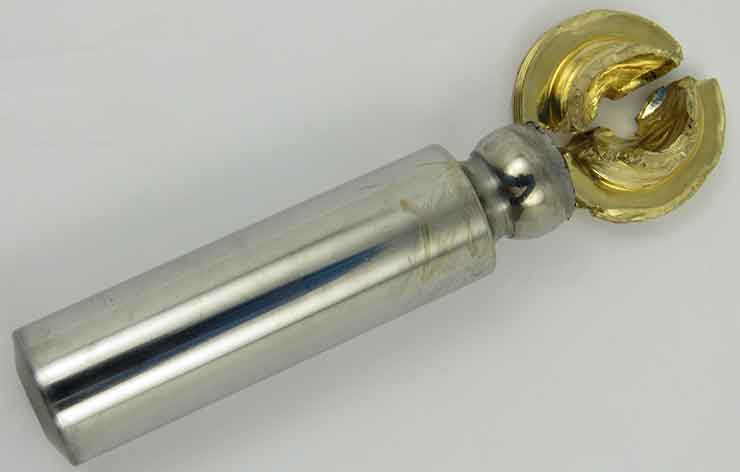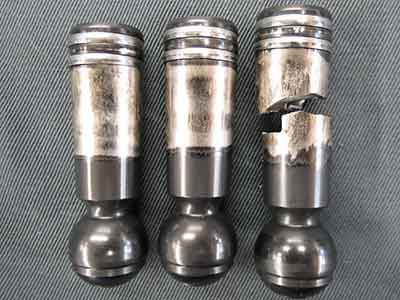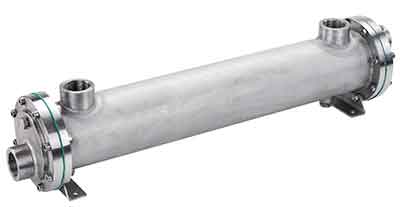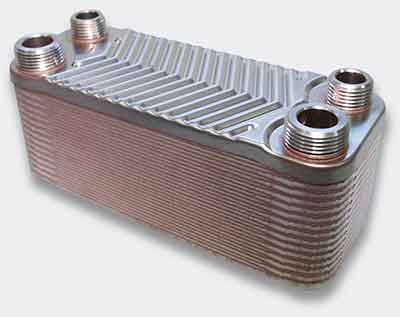Everyone knows that contamination can be catastrophic to a hydraulic system. But heat can also be detrimental to hydraulic fluid and the components within that system.

Heat contamination reduces oil viscosity, which in turn reduces the fluid’s ability to lubricate components. This thinning of the oil causes surface-on-surface wear. Without proper viscosity levels, as components rub against each other — such as a wear plate and the slippers on a piston pump — they wear at accelerated rates.
This wearing also softens metals, which in turn increases the rate of wear. For example, anywhere there’s metal rubbing on and near to other pieces of metal (even if it’s two different materials such as bronze or stainless) as the metal heats up, it becomes softer and it wears away more quickly. This problem is exacerbated if other forms of contamination are present.
Additionally, heat can break down system seals. As they break down, flecks of rubber can enter the system, causing internal contamination. And, if a seal fails, external contamination will easily enter through cylinder rods.
 Heat contamination also changes the chemical properties of hydraulic oil. It can reduce the additives in the hydraulic oils, increase sludge and also accelerate oxidation. It actually changes the nature of your oil, making what may have been a suitable oil a poor choice for your system.
Heat contamination also changes the chemical properties of hydraulic oil. It can reduce the additives in the hydraulic oils, increase sludge and also accelerate oxidation. It actually changes the nature of your oil, making what may have been a suitable oil a poor choice for your system.
Heat enters a hydraulic system in multiple ways. One culprit is ambient heat. For example, you may have a blast furnace dipping molten metal into a ladle. It is imperative that the hydraulic actuators and the oil used within them are designed for that type of environment.
Another thing to be aware of is internally generated heat; this often is generated from piston pumps, inefficient gear pumps or friction created by other internal components. For example, while useful in specific applications, low-speed, high-torque motors may only have a 60-70% efficiency rating. This means 30 to 40% of the system energy is wasted as pure heat. This internal heat reduces lubrication, increasing friction and reducing lubricity. This may eventually cause the motor to wear out.

So how to do you filter out or remove heat from a system? First, you should try to design a system that doesn’t create it in the first place. Second, in regular maintenance, always keep an eye on the reservoir levels. You should have three times the pump capacity available in the reservoir. Ensure also that the reservoir is clean and not near heat sources (such as direct sunlight or machines that generate heat).
Finally, if there is any device that could be considered a heat filter, it would be a cooler or heat exchanger, which uses water or air to bring hydraulic fluid temperature down. Several types exist.
The first is a shell and tube heat exchanger, in which coolant water flows through internal system ports and tubing while the warmer hydraulic fluid circulates through others. The heat is transferred from one fluid to the other, thus bringing the overall fluid temperature down.
 Upgrading to a brazed plate cooler helps increase efficiency, as these are extremely effective at removing heat from hydraulic systems. This design uses deep channels of aluminum or parallel plates with fins separating these plates. These channels create turbulence, with hot and cold liquids in alternation.
Upgrading to a brazed plate cooler helps increase efficiency, as these are extremely effective at removing heat from hydraulic systems. This design uses deep channels of aluminum or parallel plates with fins separating these plates. These channels create turbulence, with hot and cold liquids in alternation.
Air coolers can also be used. While not as effective, they are sufficient and often easier to use. These use a fan and radiator-type cooler, and often can be driven by hydraulic motors, simply to force cold air over the hot fluid inside.


Leave a Reply